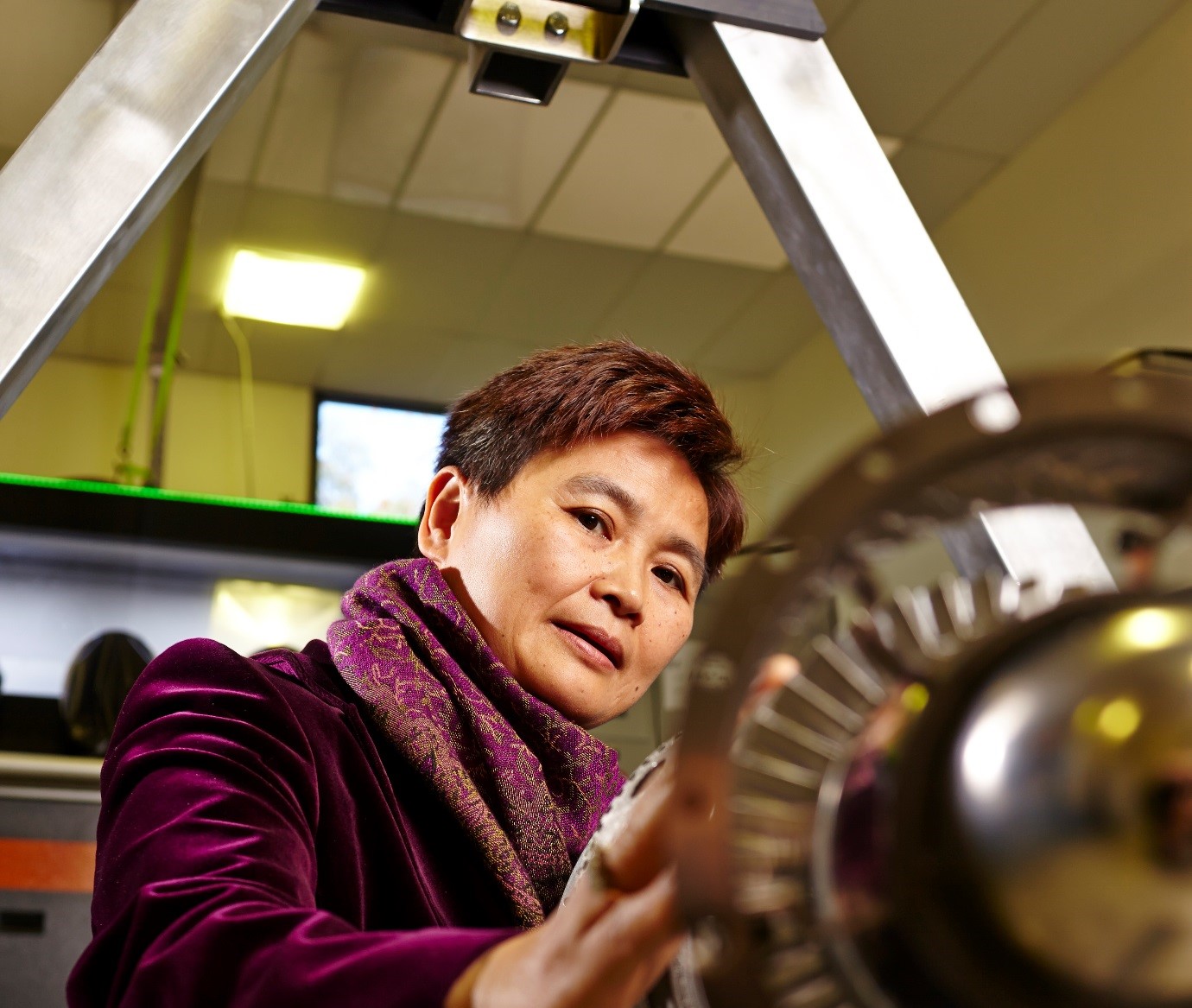Advanced metals

Manufacturing in other dimensions
Marrying advanced metals research with additive manufacturing is opening global opportunities for aerospace and biomedicine.
Professor Xinhua Wu is on a mission to tease mechanical imaginations, and to banish the tyranny of straight lines that have dictated manufacturing since the steam age. Extraordinary possibilities arise when, for example, machinery does not have to be designed to facilitate linear linkages or flat-surface joins, when engine components no longer have to be cast with bulky flanges that exist solely to accommodate bolts and brackets.
Professor Wu, an international authority on additive manufacturing – or 3D printing, as it is known – is well on the way to achieving this ambition. Her research has already made significant inroads into the aero-engineering industry, but “knowing” what is possible is not the same as “showing” what is possible.
This is the challenge she has set for her research team at the Monash Centre for Additive Manufacturing and its industry partners in Europe and Australia.
She has been demonstrating additive manufacturing’s application in jet-engine components – an exacting field of engineering and design – to signal that this manufacturing revolution is well underway and that it’s time for more industries to get on board.
“Most manufacturers know about 3D printing,” Professor Wu says. “But they don’t have enough information about its performance. They have a lot of data for processes such as casting, forging and machining. But fusing powdered metals into a one-piece 3D object direct from a computer raises questions in their minds about qualities such as tensile strength, fatigue and repeatability."
“This is why materials science to support additive manufacturing is so crucial.”
Professor Wu says science must be able to demonstrate that melted metal powders (typically titanium, aluminium and nickel) will perform as well as, or better than, metals that are conventionally cast or forged. In other words, performance needs to be assured, and accepted by industry, before designers’ imaginations can really be let loose.
“So our work with 3D printing is based very much on our materials science – an area of research in which we have a long history and understanding.”
Professor Wu is recognised as a leader in advanced light metals research; so much so that when she agreed to head the Australian Research Council (ARC) Centre of Excellence for Design in Light Metals, her industry partners – notably European aerospace companies such as Bombardier, Airbus, the European Space Agency and Safran-Microturbo – moved with her from the UK to Melbourne.
Professor Wu now heads a network called the ARC Hub for Transforming Australia’s Manufacturing Industry through High Value Additive Manufacturing. The hub has a $9 million research budget – $4 million from the ARC and the rest from industry and university partners. Industrial partners include Safran-Microturbo in France and Australian companies establishing a presence in this field, such as Metallica Minerals, Amaero Engineering (a Monash University spin-off company) and International Seal Company Australia (ISCA). Academic partners include Deakin University, the University of Queensland and the Australian Nuclear Science and Technology Organisation.
The hub provides a development stream that links materials science directly to the manufacture of end products. Professor Wu says the hub will concentrate on 3D printing of metallic components for aerospace applications, but will also explore applications for biomedicine.
Three new partnerships underway to develop specific end products involve numerous engine components and a biomedical R&D initiative. The engines include an aero-engine for Safran-Microturbo and an electricity generator based on a Stirling (closed-cycle) engine, with ISCA. This will be an inexpensive, portable engine able to generate power in isolated locations.
The biomedical developments will cover surgical instruments and patient-specific orthopaedic implants (rather than the current off-the-shelf options). This is a new partnership between Monash, two large hospitals in China and Amaero Engineering as the manufacturer in Melbourne.
The crucial advantage of additive printing is its cost. It does not require large production volumes to recoup extensive up-front investments such as moulds and casts, machining and assembly line infrastructure, which also often follow a lengthy design and testing period. In 3D printing there is minimal cost difference between printing a single unit and printing thousands of units, making it ideal for customised needs such as orthopaedic implants.